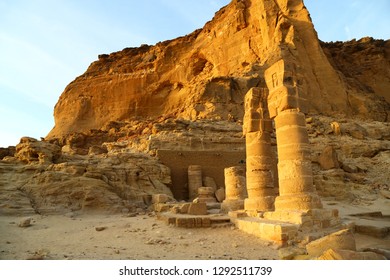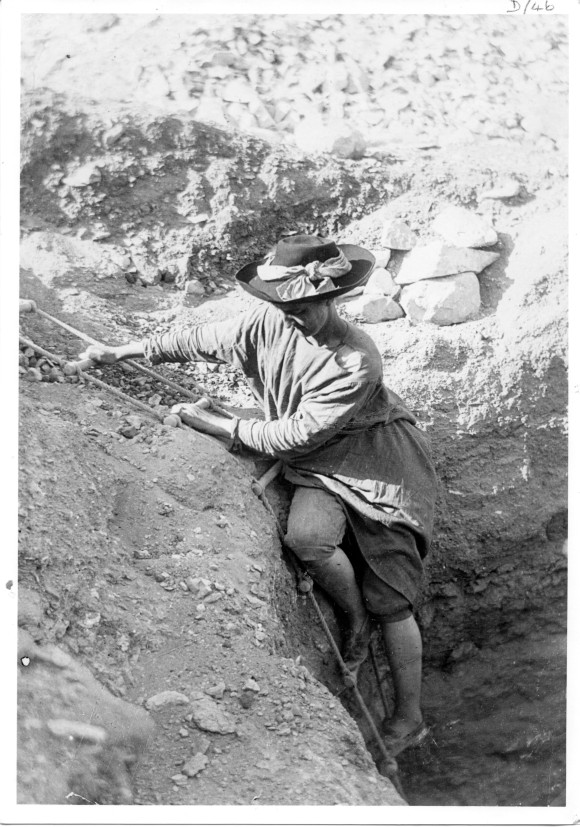Anthropology
Related: About this forumDive beneath the pyramids of Egypt's black pharaohs
The 2,300-year-old royal tomb of a Nubian pharaoh appears nearly untouched—and submerged in rising groundwater. What’s an archaeologist to do?
With more than 20 ancient pyramids sprawling across 170 acres of Sudanese desert, Nuri is perhaps the most stunning archaeological site you’ve never heard of.
PHOTOGRAPH BY ROBBIE SHONE, NAT GEO IMAGE COLLECTION
7 MINUTE READ
BY KRISTIN ROMEY
PUBLISHED JULY 2, 2019
SOMEWHERE BELOW THE surface of the kiddie-pool sized patch of brown water is the entrance to the 2,300-year-old tomb of a pharaoh named Nastasen. If I crane my neck back far enough, I can just make out the eastern flank of his pyramid rising nearly three stories above me.
. . .
Photo at link:
In order to access the tomb of pharaoh Nastasen, archaeologists had to excavate the processional staircase that leads to the burial chambers deep below his pyramid at Nuri.
PHOTOGRAPH BY STEPHANIE DENKOWICZ, NURI PYRAMIDS EXPEDITION
More:
https://www.nationalgeographic.com/culture/2019/07/dive-ancient-pyramid-nuri-sudan/?cmpid=org=ngp::mc=crm-email::src=ngp::cmp=editorial::add=SpecialEdition_20190702::rid=00000000002015005599






Wide view of Nubian pyramids, Meroe. Three of these pyramids are reconstructed.
Wikipedia:
Nubian pyramids are pyramids that were built by the rulers of the ancient Kushite kingdoms. The area of the Nile valley known as Nubia, which lies within the north of present day Sudan, was home to three Kushite kingdoms during antiquity. The first had its capital at Kerma (2500–1500 BC). The second was centered on Napata (1000–300 BC). Finally, the last kingdom was centered on Meroë (300 BC–AD 300). They are built of granite and sandstone. The pyramids were partially demolished by Italian combat medic turned explorer and treasure hunter Giuseppe Ferlini in the 1830s.[1]
Kerma was Nubia's first centralized state with its own indigenous forms of architecture and burial customs. The last two kingdoms, Napata and Meroë, were heavily influenced by ancient Egypt culturally, economically, politically, and militarily. The Kushite kingdoms in turn competed strongly with Egypt economically and militarily. In 728 BC, the Kushite king Piye united the entire Nile valley from the delta to the city of Napata under his rule. Piye and his descendants ruled as the pharaohs of the Twenty-fifth Dynasty. Napatan control of Egypt ended after being conquered by Assyria in 656 BC. The Nubian pyramids are recognized as a UNESCO World Heritage Site.[
More:
https://en.wikipedia.org/wiki/Nubian_pyramids
bobbieinok
(12,858 posts)Judi Lynn
(162,358 posts)The books could keep someone very engrossed for a long time. Don't know how I could have missed them, feeling foolish!

Photo of Hilda Petrie in her Egyptologist uniform!
Thanks for the new name. Very cool to know so many people have already read the books.
bobbieinok
(12,858 posts)Peters' other books are also good. Eg Summer of my Dragon.
The books she wrote under name of Barbara Michael's are also good. One of the earliest under that name is Ammie Come Home.
Peters got her PhD in Egyptology at the U of Chicago.
Once after her Peabody books really took off she lead a tour of important archeological sites in Egypt.